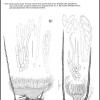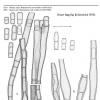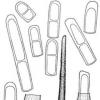
18-12-2025 18:07
Margot en Geert VullingsThese plumes were found on rotten wood.They strong

18-12-2025 17:23
 Bruno Coué
Bruno Coué
Bonjour,je serais heureux d'avoir votre avis sur c

17-12-2025 18:35
 Michel Hairaud
Michel Hairaud
Bonjour à tous/Hi to everyone I am passing along

15-12-2025 15:48
 Danny Newman
Danny Newman
Melanospora cf. lagenaria on old, rotting, fallen

15-12-2025 15:54
 Johan Boonefaes
Johan Boonefaes
Unknown anamorph found on the ground in coastal sa

15-12-2025 21:11
 Hardware Tony
Hardware Tony
Small clavate hairs, negative croziers and IKI bb

15-12-2025 07:09
 Danny Newman
Danny Newman
indet. Rutstroemiaceae sp. on unk. fallen leavesMc

15-12-2025 07:05
 Danny Newman
Danny Newman
Pseudosclerococcum golindoi (det: Zotto)near Cosb
 Bonsoir, Hi to everyone ,
Bonsoir, Hi to everyone ,Je me demande à quel genre peut appartenir cette récolte faite sur Juncus dans une tourbière dont voici quelques caractéristiques
Would anyone help me with this collection on Juncus from a peat-bog , with the following features :
Apothécies minuscules : 0,1 - 0,25 mm .
Asques H+, IKI bleu intense, 63-75 x 13 - 15
Spores : OCI 5, 16-18 x 3,8 -4,8
Poils des flancs 70-90, parois épaisses, brun noirâtre, spiralés, avec des amas glutineux en surface.
EE T. prismatica.
Amitiés
Michel

great finding!
to me it resembles like Phaeoscypha cladii [Hyaloscypha cladii Nag Raj & Kendr. , Uncinia scintillans Graddon]
look in Fungi non Delineati 31 Raitviir
Cheers,
Stip

incredible, I fear you need to describe this fungus in detail, who knows....
Have you a photo of the apical ring in IKI? And what are these black hairs around? Anamorph??
Zotto

How come had I not in mind the smashing pictures by Jens Petersen in the work Stip cited !
In every collection cited, the chalara (longblack hairs) seems somehow associated with the Phaeoscypha . In my collection, the apos are, each time, on parts of the Juncus stems infected with the anamorph.
I found septate spores, but not all, including inside the ascus as one can observe on the image with CRB (not quite obvious ) . Here is also a picture showing the vbs in the multiseptate paraphyses and another one for IKI ascus apex reaction.
Amitiés
Michel

I also believe the spores are partly septate, inside the living ascus, the arrangement of the drops and a very slight constriction tell for this. If you had applied Melzers to this ascus it wuld have become very obvious.
Michel, do you also have a photo of the paraphyses unstained? There are VBs which are unknown, for instance, in Unguiculariopsis.
Graddon did not believe that the Chalara belongs to the fungus. Now why has cladii priority over scintillans? cladii was described in 1975, but scintillans in 1974. With the new rules, however, the anamorph epitheton cladii MB Ellis 1961 will be the oldest, though it cannot be combined in Phaeoscypha!
Zotto

Michel nouvelle photo

this is great, your detailed photos provides us a better description of this species and its ecological range, did you make pictures of the chalara?, although not direct visible they seems to be present? constante.
Did you have seen old spores, according to Spooner they should become brownish.
cheers,
Stip

these are only hairs, not phialides. Maybe the anamorph is not present, i.e., only with its mycelium and hairs. But I suspect it is between the hairs and much shorter and hyaline.
In the attach some pages of Nag Raj. I fear I do not have the plate of Chaetochalara cladii.
Zotto

And the plate of Nag Raj and Kendrick too (right side).
Cheers
Martin

not brilliant I'm afraid and done in a hurry from PDFs - not the originals, but these may prove somewhat helpful:
amitiés
Chris
PS I wonder if Catania and Romero have a different species? The substratum/habitat is very different, and they describe the conidia with "pared lisa" i.e. smooth walls; in contrast Nag Raj & Kendrick stress the verrucose ends of the conidia as an important taxonomic character, and Ellis, in his original description of Chalara cladii says "utrinque truncata verruculosaque" . . . .
Congratulations
I hope you could capable of doing the same thing at Somiedo!

you are raising justified doubts on the identity of the specimen shown by Catania and Romero. (And sorry for uploading the wrong plate that Zotto had already shown). The length of the conidiophores in the description of Nag Raj and Kendrick exceed those from Argentinia by far as well (they give up to 610 µm).
But I wonder why they do not mention the setae they show in the plate of the teleomorph (without describing them). Do they belong to the teleomorph state?
Regards
Martin

Michel's macrophoto does not actually look like there being anything else than setae. And I was wrong to assume that the conidiophores are hyaline and much shorter in this anamorph.
Zotto

Thanks to everyone for the documents provided and interest showed for this collection.
Amitiés à tous
Michel

Michel
serais tu l'auteur de l'observation de Phaeoscypha cladii à la tourbière des dauges dans le 87... ??? lu dans le rapport de la RNN des dauges
En effet nous essayons de synthétiser les données myco d'auvergne limousin sur ce site
www.fauneflore-massifcentral.fr
je crois savoir que tu devais faire une publication ? l'as tu faite ? si oui quelle serait la référence...
autoriserais tu l'utilisation d'une de tes images pour illsutrer la fiche sur le site ?
merci pour tes réponses que tu peux me donner réponse en privé
amicalement Pascal Duboc

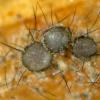
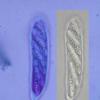
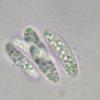
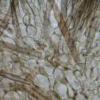
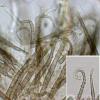
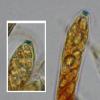
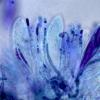
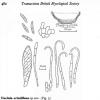
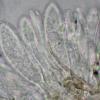
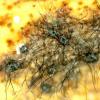
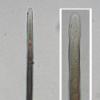
 Nag-Raj-amp-Kendrick-1975-59-67-183-4-0001.pdf
Nag-Raj-amp-Kendrick-1975-59-67-183-4-0001.pdf